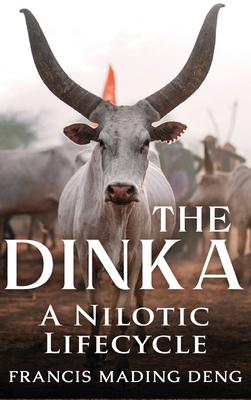The Dinka: A Nilotic Lifecycle was first published in 1972, as The Dinka of Sudan, which was published again in 1984 and 1986. On its 50th anniversary year of publication, the book has been reissued; as relevant and vital in the 21st century, as any other era. Its author, Dr. Francis Mading Deng, is one of South Sudan's most revered statesmen and scholars, having published over 40 books during a distinguished career as an academic, UN official, and diplomat. As a Dinka, Dr. Deng writes of his own culture in rich and fascinating detail - as only an insider can. He added to that detail in the 1986 release by addressing the significant changes the ancient Dinka culture was experiencing, including the tragedy of civil war. In this issue, the author notes further change, particularly, the impact of South Sudan gaining its independence in 2011. He also addresses the dilemma of studying the culture of one ethnic group by a member of that group - in a country that is rich with ethnic diversity. It is a rare and exceptional thing that a book endures for a period of fifty years, let alone a book that is the first of its kind; one which describes South Sudan's largest ethnic group, authored by a member of that group, updated by that author and now issued for the fourth time. The Dinka: A Nilotic Lifecycle is a masterwork that stands out for those reasons - and because it is a compelling and intriguing read.

The Dinka: A Nilotic Lifecycle was first published in 1972, as The Dinka of Sudan, which was published again in 1984 and 1986. On its 50th anniversary year of publication, the book has been reissued; as relevant and vital in the 21st century, as any other era. Its author, Dr. Francis Mading Deng, is one of South Sudan's most revered statesmen and scholars, having published over 40 books during a distinguished career as an academic, UN official, and diplomat. As a Dinka, Dr. Deng writes of his own culture in rich and fascinating detail - as only an insider can. He added to that detail in the 1986 release by addressing the significant changes the ancient Dinka culture was experiencing, including the tragedy of civil war. In this issue, the author notes further change, particularly, the impact of South Sudan gaining its independence in 2011. He also addresses the dilemma of studying the culture of one ethnic group by a member of that group - in a country that is rich with ethnic diversity. It is a rare and exceptional thing that a book endures for a period of fifty years, let alone a book that is the first of its kind; one which describes South Sudan's largest ethnic group, authored by a member of that group, updated by that author and now issued for the fourth time. The Dinka: A Nilotic Lifecycle is a masterwork that stands out for those reasons - and because it is a compelling and intriguing read.